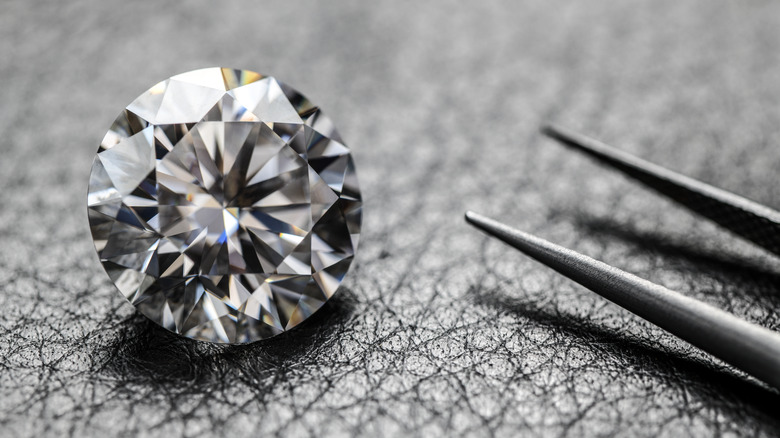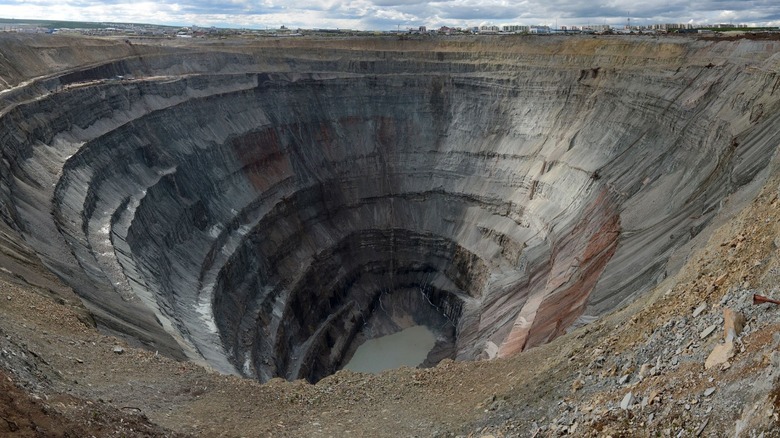The Truth About The Mirny Diamond Mine
Soviet Russia was never one for ponying up the truth about any of the sundry shady dealings it was involved in. The brutal truth about the labor camps the country ran for decades remained unknown to the outside world for most of the 20th century, for example. And where does such a country hide the dirty little secrets it doesn't want getting out? Why, somewhere no one willingly wants to go: Siberia.
One such secret was exactly how the Mirny Diamond Mine, in Eastern Siberia, was so productive. According to All That Is Interesting, work on the mine began in the late 1950s, as Russia was putting itself back together after the Nazis nearly wiped every single Soviet off the map during World War II. It was no easy task, either. For one thing, Siberia is cold. Very cold. Thermometers there register an average temperature of 40 below, freezing the ground into unforgiving permafrost until the spring comes. When it does come, the permafrost melts into a muddy sludge that doesn't make things any better.
But the Soviets figured it out and by the dawn of the 1960s, the Mirny Diamond Mine was not only in business, it was booming, producing an average of 10 million carats of the shiny little rocks each year. A fifth of those were gem quality. But the monopolizing guys over at De Beers smelled something fishy and wanted to know the truth behind this mine that was eating into their profits.
The Mirny Diamond Mine remains a mystery to this day
The De Beers executives didn't believe that such a comparatively small mine should be able to pump out so many precious stones, so they tried to get a look into its operations. As Amusing Planet notes, production should have dropped off by the 1970s, but Russia kept flooding the market with high-quality diamonds. The De Beers guys were finally granted a tour of the mine in 1976, but Russia made sure they only got about 20 minutes to poke around, and they didn't come away with any answers to their burning question.
The mine remained in operation by a few private companies after the collapse of the U.S.S.R. in 1991 until it was abruptly and inexplicably closed in 2001. What remains is a gigantic hole in the ground that creates such a violent vortex due to the cold air from below meeting the warmer (comparatively speaking) air at ground level that it has the power to suck helicopters and other small aircraft down into it to their doom. No one has ever solved the mystery of how the mine produced such impressive numbers. It pumped out as much as $13 billion worth of diamonds during its lifetime.
Some sources say the mine is abandoned, but Russian company Alrosa says it's been operating it as an underground mine since 2009. As with many things in Russia, both then and now, the truth is hard to come by. Unless you're willing to make the trip to Siberia yourself to see, best to just accept the mystery and call it a day.

